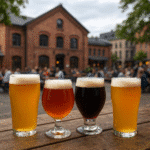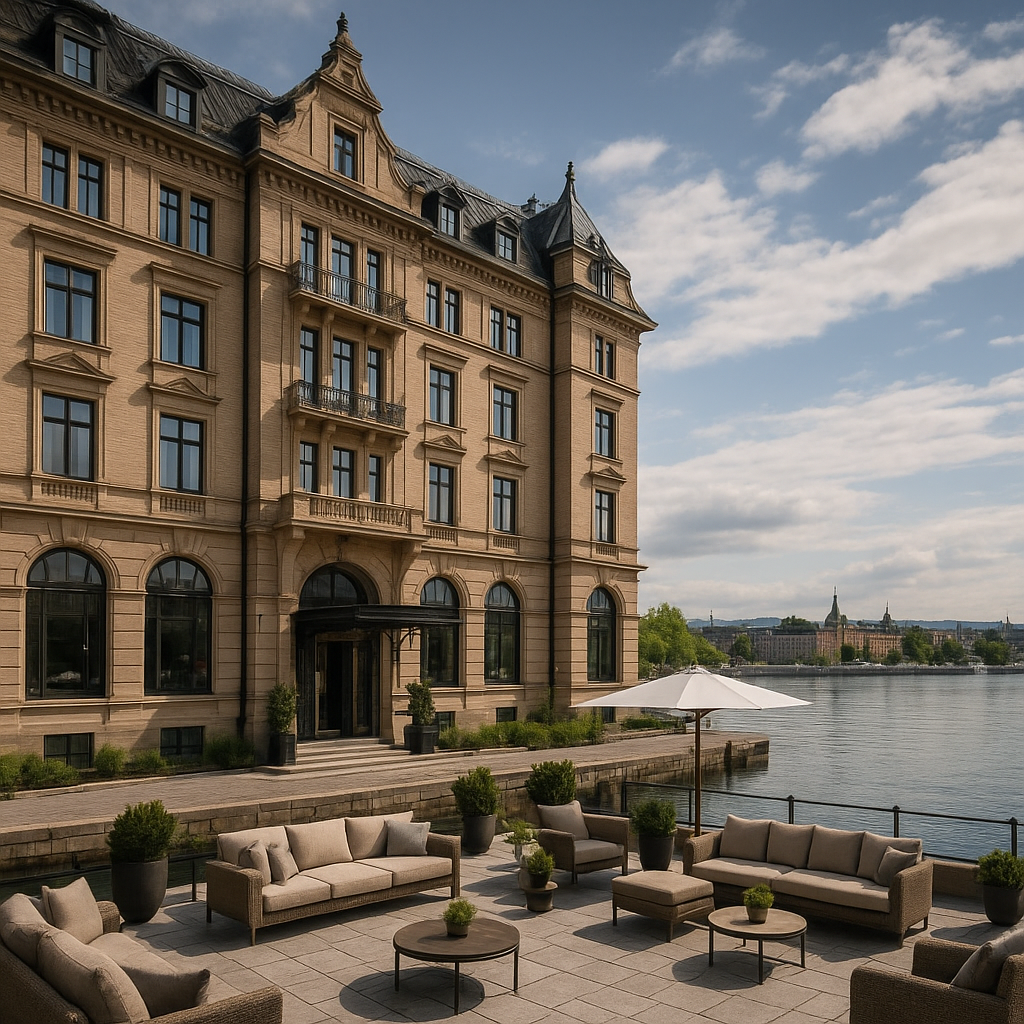Oslo stands as a fascinating crossroads where cutting-edge design meets centuries-old traditions. The city’s skyline narrates a story of transformation—where sleek glass façades soar above historic fortresses and wooden villas. By exploring its varied landscapes, from harborfronts to leafy suburbs, one can appreciate how architecture has become an essential part of Oslo’s identity, reflecting evolving social values and creative aspirations.
Architectural Landmarks That Shape the Skyline
The soul of Oslo’s built environment can be found in its most iconic structures. A visit to the Oslo Opera House is an immersive experience: its tilted white-marble roof invites pedestrians to climb and survey the shimmering harbor. Designed by the Norwegian firm Snøhetta, this building merged cultural ambition with public accessibility, turning an arts venue into a communal gathering spot.
Another centerpiece is the Munch Museum, perched on the waterfront to house the works of Edvard Munch. With its towering volumes of raw concrete and glass, the museum’s restrained palette highlights the intensity of Munch’s paintings. It also demonstrates how architecture can serve as a gallery and a symbol of national pride.
- Barcode District: A sequence of high-rise blocks that combines office spaces with street-level shops, reflecting Oslo’s drive for efficient urban density.
- Akershus Fortress: A medieval stronghold overlooking the harbor, offering a glimpse into Norway’s defensive strategies and royal ceremonies from the 13th century onward.
- National Museum: A newly consolidated institution that unites art, architecture, and design collections in one monumental complex.
Each landmark contributes a chapter to Oslo’s architectural narrative. They exemplify the city’s blend of monumental civic ambition and pedestrian-friendly design, reaffirming that public spaces can be both functional and inspiring.
Innovations in sustainability and modern Design
Oslo strives to lead Northern Europe in green initiatives, making sustainability a guiding principle for new developments. Buildings now feature energy-efficient glazing, green roofs, and heat recovery systems that harness the chilly Nordic climate. These features are not mere add-ons; they define the approach taken by architects and planners throughout the metropolitan area.
Waterfront Revitalization
Transforming industrial docks into vibrant public realms has been one of Oslo’s most ambitious projects. The former shipyards along the Oslofjord have given way to mixed-use neighborhoods. Residential towers flaunt solar panels and ventilated façades, while promenades are shaded by rows of birch trees and dotted with seating areas. At dusk, LED lights embedded in the boardwalk echo the gentle ripples of the water, illustrating how technology can celebrate the natural environment.
Smart Communities
The Brattørkaia district employs smart-grid systems that monitor energy consumption in real time. Public buildings share data on heating loads and adjust temperatures automatically. Beneath the streets, arrays of sensors track footfall, air quality, and noise levels. This data-driven approach fosters healthier living conditions and optimizes resource use, positioning Oslo as a global model for digital-age urbanism.
Innovative materials also play a critical role. Timber, sourced from sustainably managed forests, has returned as a preferred structural element in mid-rise apartments and cultural centers. These wooden volumes, treated for fire safety and longevity, cast a warm glow against the Scandinavian light and recall Norway’s long timber-building tradition—reimagined through a 21st-century lens.
Preserving traditional Roots and Cultural Heritage
While contemporary interventions receive much attention, Oslo’s character is equally defined by its historic quarters. The neighborhood of Kvadraturen showcases a grid of 17th-century streets, lined with merchants’ houses in brick and timber. Many of these buildings have been adaptively reused—old warehouses converted into studios, boutiques, and cafés—ensuring that heritage coexists with modern life.
In the heart of Oslo lies a testament to cultural continuity: the Akerselva River corridor. Once a hub of mills and factories, it has been transformed into a green ribbon crossing the city. Stone walls and iron footbridges retain the imprint of industrial activity, while new constructions respect the existing scale and materiality. Walkers marvel at how time-worn masonry frames panoramic views of the fjord beyond.
- Gamle Oslo: A patchwork of narrow alleys and hidden gardens where archaeological excavations have revealed traces of Viking settlements.
- Majorstuen Villas: Ornate wooden houses painted in cream and sage, reflecting the bourgeois tastes of the late 19th century.
- The Royal Palace Ensemble: Symmetrical gardens and wrought-iron gates that form a classical counterpoint to the city’s avant-garde tendencies.
This interplay between old and new is further celebrated through festivals and public art installations. Murals, sculptures, and projections adorn the façades of heritage buildings, creating dialogues across centuries and sparking discourse on collective memory.
Future Directions: innovation and urban Resilience
As global challenges mount, Oslo’s architectural community remains committed to adaptation and experimentation. Flood defenses integrated into parkland anticipate rising sea levels. Flexible floor plans allow buildings to shift functions over time—from classrooms to community hubs—addressing changing demographics and social needs.
The upcoming projects include a research campus dedicated to climate technologies and a cultural hub built almost entirely using prefabricated modular components. Both endeavors illustrate Norwegian expertise in collaboration and sustainability, two pillars that have guided design since the 1970s. Through competitions and public consultations, citizens play an active role in shaping the city’s evolution, reinforcing democracy as an architectural value in itself.
By weaving together heritage, ecological stewardship, and technical prowess, Oslo continues to redefine what a modern capital can be. Its buildings do more than house activities: they reflect a society that values transparency, community, and respect for nature. For architecture enthusiasts, urban planners, and casual visitors alike, Oslo offers a living laboratory where each street, plaza, and structure invites discovery and engagement.










